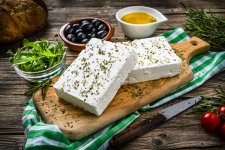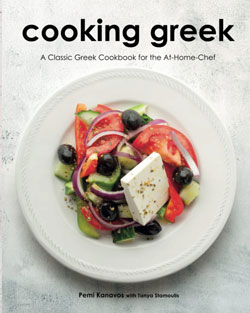redsoxdw_
Active member
It's often challenging to find all the cheeses I want outside of Greece. I love Greek cheese, and my love for it extends well past feta cheese, though a great feta is one of my favorites. I thought I would make a list of my favorite Greek cheeses that I love to use in cooking (and eat by themselves) that I can more easily find outside of Greece.
1. Feta Cheese: Let's start with the most well-known Greek cheese - Feta. It is one of the most versatile cheeses, and also one of the easiest to find outside of Greece. Feta crumbles effortlessly and has a tangy, salty flavor that pairs excellently with salads, sandwiches, and pasta dishes. Use Feta in your cooking to add an extra layer of texture and flavor.
2. Kefalotyri Cheese: Kefalotyri is a hard cheese made from sheep's milk. It has a nutty and salty taste that resembles Pecorino Romano. Kefalotyri is commonly used in Greek dishes like Saganaki, where it is fried and served with a squeeze of lemon. Use it as a substitute for Parmesan or Pecorino in your Italian-inspired dishes.
3. Halloumi Cheese: Another popular Greek cheese is Halloumi, a semi-hard cheese made from sheep's milk. It has a unique texture that is both firm and chewy. Halloumi is the perfect cheese for grilling as it holds up well under heat without melting. Use it in your next summer BBQ as a vegetarian option or add it to sandwiches and salads for extra flavor. It's technically a Cyprus cheese, but I like it and consider it "Greek" enough.
4. Kasseri Cheese: Kasseri is a soft, yellow cheese that is made from sheep's milk. It has a buttery and slightly tangy taste that pairs well with meats and vegetables. Kasseri is used in Greek cuisine to make a delicious roasted cheese dish called Saganaki me Loukaniko. Try grilling it or melting it for a tasty twist on your favorite melting cheeses like mozzarella or cheddar.
5. Mizithra Cheese: Last but not least, Mizithra is a creamy, fresh cheese that is made from sheep's or goat's milk. It has a mild, slightly sour taste that is similar to ricotta. Mizithra can be used both in sweet and savory dishes and makes an excellent addition to salads and pastries.
1. Feta Cheese: Let's start with the most well-known Greek cheese - Feta. It is one of the most versatile cheeses, and also one of the easiest to find outside of Greece. Feta crumbles effortlessly and has a tangy, salty flavor that pairs excellently with salads, sandwiches, and pasta dishes. Use Feta in your cooking to add an extra layer of texture and flavor.
2. Kefalotyri Cheese: Kefalotyri is a hard cheese made from sheep's milk. It has a nutty and salty taste that resembles Pecorino Romano. Kefalotyri is commonly used in Greek dishes like Saganaki, where it is fried and served with a squeeze of lemon. Use it as a substitute for Parmesan or Pecorino in your Italian-inspired dishes.
3. Halloumi Cheese: Another popular Greek cheese is Halloumi, a semi-hard cheese made from sheep's milk. It has a unique texture that is both firm and chewy. Halloumi is the perfect cheese for grilling as it holds up well under heat without melting. Use it in your next summer BBQ as a vegetarian option or add it to sandwiches and salads for extra flavor. It's technically a Cyprus cheese, but I like it and consider it "Greek" enough.
4. Kasseri Cheese: Kasseri is a soft, yellow cheese that is made from sheep's milk. It has a buttery and slightly tangy taste that pairs well with meats and vegetables. Kasseri is used in Greek cuisine to make a delicious roasted cheese dish called Saganaki me Loukaniko. Try grilling it or melting it for a tasty twist on your favorite melting cheeses like mozzarella or cheddar.
5. Mizithra Cheese: Last but not least, Mizithra is a creamy, fresh cheese that is made from sheep's or goat's milk. It has a mild, slightly sour taste that is similar to ricotta. Mizithra can be used both in sweet and savory dishes and makes an excellent addition to salads and pastries.




